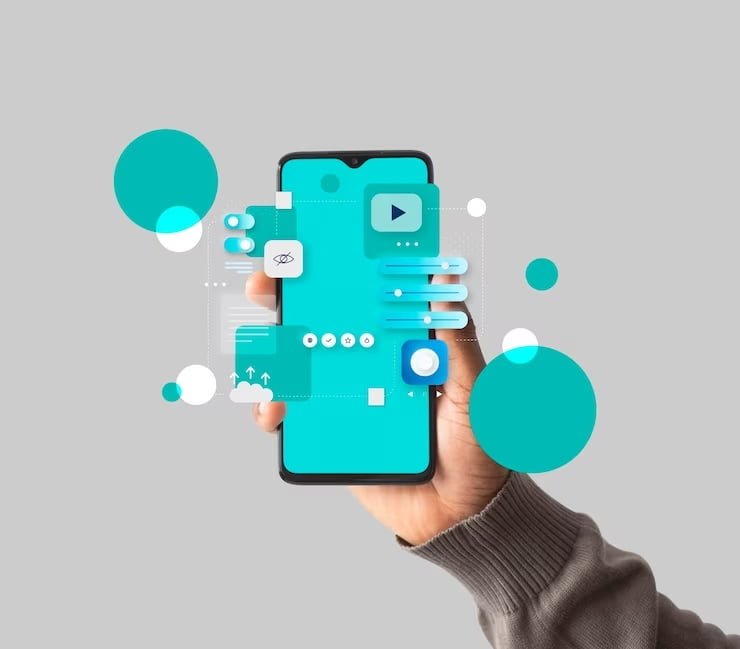In the fast-paced world of technology, creating your own mobile app has become an exciting endeavor for many. Whether you have a brilliant app idea or simply want to delve into the world of mobile app development, this step-by-step guide will walk you through the process of bringing your vision to life. From concept to deployment, we’ll cover the essential steps, tools, and techniques to help you create your first mobile app from scratch.
Understanding the Basics
Step 1: Define Your Idea and Set Goals
The first and crucial step in creating a mobile app is to clearly define your idea. What problem does your app solve? Who is your target audience? Setting specific goals will guide you throughout the development process and help you stay focused on delivering a solution that resonates with users.
Step 2: Research and Market Analysis
Before diving into development, conduct thorough research and market analysis. Understand the competitive landscape, identify similar apps, and analyze user reviews. This will not only help you refine your concept but also give you insights into what users like and dislike about existing solutions.
Step 3: Choose the Right Platform
Decide whether you want to develop your app for iOS, Android, or both platforms. The choice between native, hybrid, or cross-platform development depends on factors like target audience, budget, and development timeline. Each option has its pros and cons, so make an informed decision based on your project requirements.
Planning and Design
Step 4: Wireframing and Prototyping
Create wireframes and prototypes to visualize the app’s structure and user interface. Tools like Sketch, Figma, or Adobe XD can help you create mockups that serve as a blueprint for your app’s design. This step is crucial for refining the user experience and getting a sense of the app’s flow.
Step 5: Define the User Experience (UX)
Focus on creating a seamless user experience. Consider user journeys, navigation flow, and the overall look and feel of your app. A well-designed app not only attracts users but also enhances usability and satisfaction.
Step 6: Choose a Development Approach
Select a development approach based on your chosen platform and goals. If you’re developing for iOS, Swift and Objective-C are common languages, while Kotlin and Java are used for Android. Cross-platform frameworks like React Native or Flutter allow you to write code once and deploy it on both iOS and Android.
Development
Step 7: Set Up Your Development Environment
Before you start coding, set up your development environment. Install the necessary software, such as Xcode for iOS development or Android Studio for Android development. Familiarize yourself with the development tools and platforms you’ll be using.
Step 8: Write Your First Lines of Code
Now comes the exciting part – writing code! Create the basic structure of your app, starting with simple functionalities. Gradually build upon these foundations as you move forward. If you’re new to coding, online tutorials and documentation for your chosen programming language will be invaluable resources.
Step 9: Integrate Necessary Features
Depending on your app’s purpose, integrate essential features such as user authentication, data storage, and any other functionalities that are integral to your app’s core concept. Consider using third-party APIs to enhance your app’s capabilities and save development time.
Step 10: Test Your App Thoroughly
Testing is a crucial phase in app development. Identify and fix bugs, test the app on various devices, and ensure it works seamlessly across different screen sizes and resolutions. Testing tools and services like TestFlight (for iOS) and Firebase Test Lab (for Android) can assist in the testing process.
Deployment
Step 11: Prepare for Launch
As you approach the final stages of development, prepare for the app launch. Create compelling visuals for your app store listings, write engaging descriptions, and choose an eye-catching app icon. Pay attention to keywords to enhance discoverability on the app stores.
Step 12: Submit Your App to App Stores
For iOS apps, submit your app to the Apple App Store, and for Android apps, submit to Google Play. Follow the respective guidelines for each platform to increase the chances of a smooth approval process. Be prepared to provide necessary assets and information, including privacy policies and app screenshots.
Step 13: Marketing Your App
Once your app is live, shift your focus to marketing. Utilize social media, create a website, and consider paid advertising to increase visibility. Encourage early users to leave reviews and ratings, as positive feedback can boost your app’s credibility and ranking.
Post-Launch
Step 14: Gather User Feedback
Listen to user feedback and reviews. Analyze user behavior through analytics tools to understand how users interact with your app. Use this information to make data-driven decisions for future updates and improvements.
Step 15: Iterate and Improve
The journey doesn’t end with the app launch. Continuously iterate and improve your app based on user feedback, technological advancements, and changing market trends. Regular updates keep your app relevant and maintain user engagement.
Conclusion
Creating your first mobile app from scratch is a rewarding but challenging endeavor. Following these steps will guide you through the entire process, from conceptualization to deployment. Remember, patience and perseverance are key, especially if you’re new to mobile app development.
If you find the process overwhelming or need specialized expertise, consider hiring experienced mobile app developers. These professionals can bring valuable insights and skills to your project, ensuring a smoother development journey. Engaging with mobile app developers allows you to leverage their experience, tackle challenges more efficiently, and ultimately, deliver a high-quality mobile app.
In conclusion, creating a mobile app requires a combination of creativity, technical skills, and dedication. By following this step-by-step guide and, if needed, collaborating with mobile app developers, you’ll be well on your way to bringing your app idea to life and making a mark in the dynamic world of mobile technology.
Read more related content:
Discover more from TheLatestTechNews
Subscribe to get the latest posts sent to your email.

